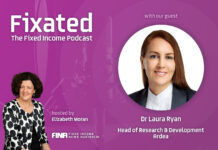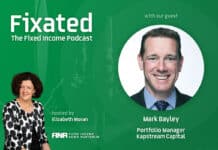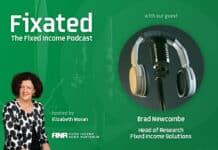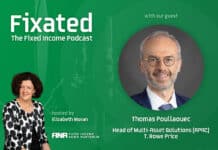
By Robert Tipp, Managing Director, Chief Investment Strategist, and Head of Global Bonds at PGIM Fixed Income

This could be one of the more fraught periods of the Trump presidency with bouts of volatility likely to create both risks and opportunities.
We remain optimistic on the market’s longer term return prospects.
After a pause in late last year, the bond bull market resumed in the first quarter of the year, but with wide variations by sector and region.
While our favourable outlook for the bond market dating back to the end of 2022 stands, (especially for the higher yielding sectors) stark risks remain given the rapidly evolving investment environment.
Bonds may be far better positioned than equities and cash to weather or even benefit from serious market downdrafts that would push rates lower and consequently boost bond returns.
So, where to from here?
Since the beginning of the current bull market in Q4 2022, variable economic data and events, such as the SVB crisis, have kept the markets subject to bouts of volatility.
At this stage, we expect more of the same as we pass through what may represent the high-water mark for anxiety stemming from the Trump administration’s rapidly evolving policies.
In terms of underlying fundamentals, we expect to see the highly volatile policy backdrop contribute to a further moderation of what was already a gradual growth backdrop.
Further moderation should support central banks’ pre-existing bias to cut rates and cushion downside risks. It should also make the potential for rate hikes even more remote despite the potential for tariff-driven increases in inflation.
Also read: Fixed Income At The Crossroads of Trade and Trust
As a result, we expect that long-term returns will likely mirror current elevated yield levels.
Furthermore, there may be an upside bias to returns as a result of three factors:
- Investors may be awash in cash and under-allocated to bonds. Money fund balances have risen to successive records and may represent a liquidity pool eager to lock in long-term yields, especially if and as cash rates fall.
- Investors shifting to lock in yield for the long term. With Western central banks past their peak policy rates, investors may increasingly shift from short-term investments and into bonds as they lock in yields for the long term. The net result: long-term yields may be capped around current levels.
- Despite bouts of volatility, credit spreads may remain rangebound. Moderating growth and heightened anxiety may translate into a “good enough” environment as fundamentals allow for modest credit outperformance over the long term.
Despite heightened geopolitical volatility, we not only remain constructive on fixed income in absolute terms, but also relative to cash and equities given the downside risks looming in the investment backdrop.
The combination of high absolute yields and supportive central banks creates an environment where long-term bonds should outperform cash over the long run.
Furthermore, moderate economic growth remains sufficiently supportive of credit fundamentals and should support a steady bid for yield.
This is likely to lead to a relatively flat yield curve (notwithstanding potential declines at the front of yield curves in the event policy rates decline) and allow spreads to remain in the bottom quartile of their historical ranges.
This will create an environment where investors can continue to “earn the yield” and maybe then some in this slow-moving bull market.
Moderate growth drives divergent behaviour globally
The convergence of G3 economies towards moderate growth drove divergent behaviour across interest-rate, equity, and credit markets in the first quarter of this year.
As expected, the increase in U.S. rates in the fourth quarter of 2024 was indeed a pause, after which the bull market resumed at the beginning of this year as U.S. rates declined and European credit spreads tightened. While trajectories for the major economies appear to be converging, the dynamic across markets is, perhaps ironically, one of divergence.
In the case of the U.S., anxiety regarding rapidly shifting government policies e.g., DOGE layoffs, tariffs, and the immigration crackdown broke, or, at a minimum, interrupted the mystique of “American Exceptionalism.” In the U.S., rates and the dollar fell, equities underperformed, and spreads widened.
Meanwhile, European markets were stunned with rates rising, spreads tightening, and equities outperforming. The surprise moves were driven by expectations that the sudden drive for military self-sufficiency would result in looser fiscal policy, higher defense spending, and, ultimately, stronger growth.
In other noteworthy breaks from the U.S. markets, Chinese rates rose as their roaring bull market (entering its third year) took a break. In Japan’s case, the increase in yields was just another quarter of JGBs continuing their multi-year trek higher. The impetus for higher rates in the first quarter of the year arose from the ongoing economic recovery and a strong Spring wage round, all of which adds up to a rising probability of more rate hikes by the Bank of Japan.
The bottom line
The moderate economic backdrop with downside risks is likely to attract ongoing flows into fixed income as investors seek to lock in yields for the long term.
From current yield levels, bonds especially those in the higher-yielding sectors should generate respectable returns and provide ballast to investors’ portfolios, while intermittent volatility may continue to create opportunities to add value through active management.

































